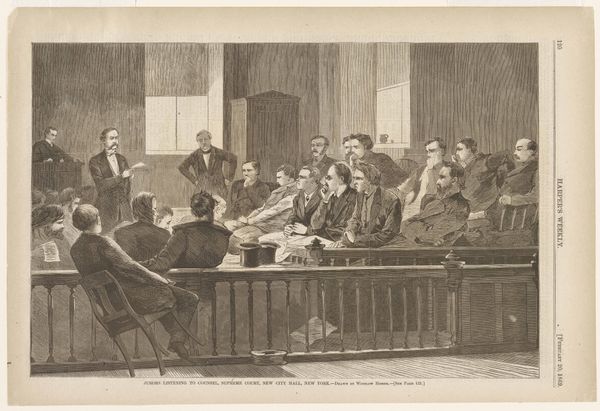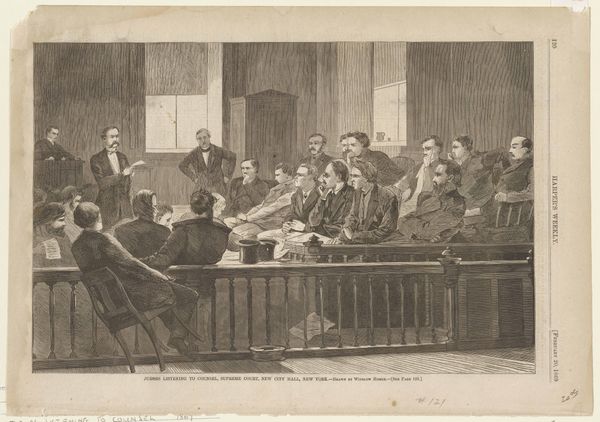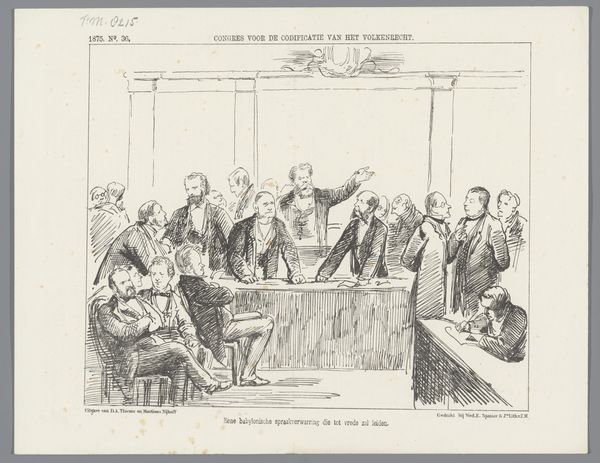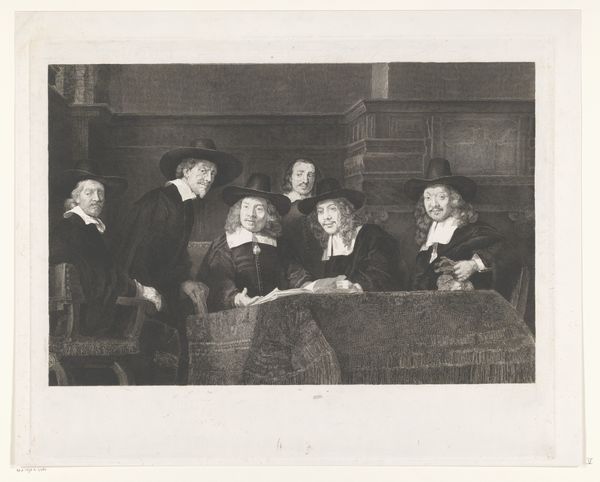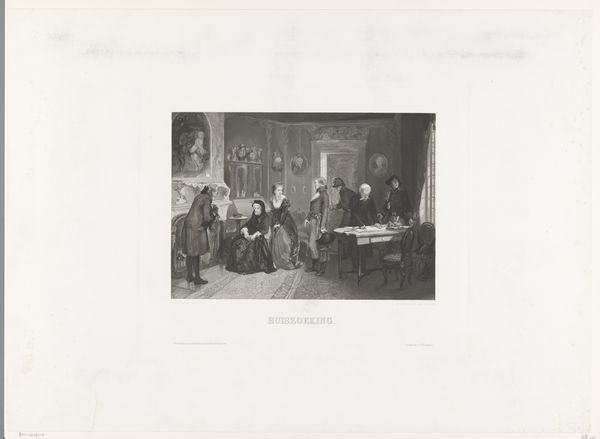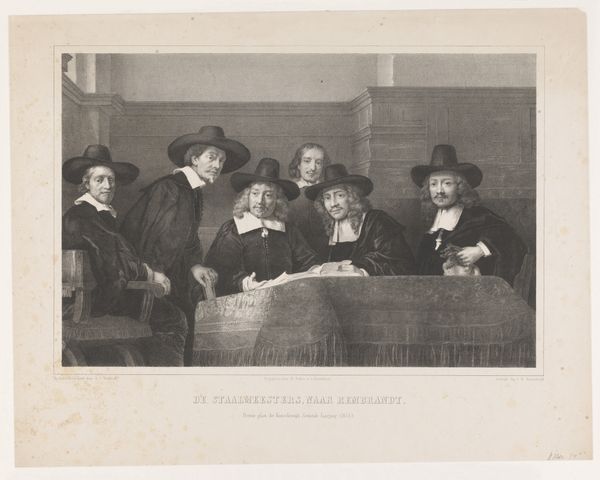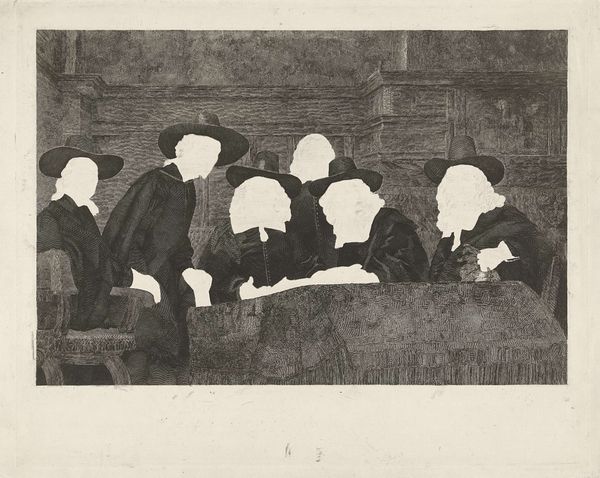
drawing, print, etching
#
portrait
#
drawing
#
medieval
# print
#
etching
#
group-portraits
#
genre-painting
#
history-painting
#
realism
Dimensions: height 291 mm, width 444 mm
Copyright: Rijks Museum: Open Domain
Editor: This print, titled "Kerkgangers en een misdienaar in de kerk," or "Churchgoers and a Server in Church," by Auguste Danse, dates back to 1880. It’s rendered in etching. It evokes a solemn and slightly somber mood. The composition feels very formal. What do you see in this piece? Curator: Immediately, I’m struck by the arrangement, this frieze-like presentation. Six men in dark clothing line the back, almost like judges, while a lone figure in white sits beneath them, a visual emphasis of innocence or perhaps vulnerability. Does the child's white garment carry a specific symbolic weight in your eyes? Editor: I hadn’t considered that…White often signifies purity, but vulnerability too, as you mentioned. The contrast is quite stark, especially since all the other figures wear dark clothes. Curator: Indeed. Now, notice the architectural details – are they merely backdrops, or do they amplify a certain feeling? The setting feels formal, steeped in tradition. Etching lends itself to capturing these precise, linear elements. Editor: I think it adds to the sense of importance, almost like we're witnessing some sort of ritual or established practice. It's very orderly and structured, yet there's something intimate about it. It makes me wonder about the stories behind these individuals. Curator: Absolutely. The symbolism goes beyond mere representation; it taps into shared cultural memory of societal structure. What have you gathered, now, about the power of symbolic composition after exploring this piece? Editor: I understand now how every visual element contributes to meaning, that the arrangement of figures and details work together to communicate social or spiritual themes. Thanks. Curator: It's been my pleasure. Each artwork contains many layers, just waiting to be unveiled.
Comments
No comments
Be the first to comment and join the conversation on the ultimate creative platform.
